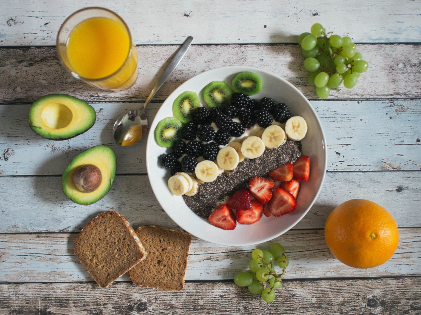
When was the last time you did a lipid profile test? Was it shocking to see that the levels of triglycerides in your body are extremely high? Well, before we get down to the basics of how you can lower down your triglyceride levels. Let’s find out how the triglycerides store the unused calories to provide your body with the right energy between meals.
Triglycerides rise after you eat. If you store the extra calories you may not need, it is stored and converted into triglycerides and transfers the same into your fat cells for later use. Elevated levels of triglycerides can amp up your risk for heart disease. Triglycerides are measured along with cholesterol, and if the numbers rise above 150 mg/dL, it is usually considered high. Well, even if your triglycerides consistently come as high, you can lower the levels with these strategies.
Shed Additional Pounds
High triglycerides usually is a result of consuming more calories than your body burns. So the best way to rein in the levels is to watch your calorie intake. Well, you can try to cut down at least 500 to 1000 calories per day. Keeping a strict tab on your calorie intake is one of the best ways to lose extra weight and lower your triglyceride levels. Dropping at least 5-10 percent of your body weight is a great strategy to control your triglycerides drastically. Consult with your doctor before you make any changes to your diet.
Avoid Added Sugar
 The added sugar can certainly turn out to be bad news to your health, especially your triglyceride levels. Most of the sweet stuff in your packaged foods, such as high fructose corn syrup, can disrupt your hormone levels. When you eat the most sugary stuff, you end up eating much more than you normally would. The excess amount can lead to elevated triglycerides. A person whose calorie consumption includes a lot of sugar, is vulnerable to heart diseases. The American Heart Association recommends women not to eat more than six teaspoons of sugar, whereas men are allowed not more than nine teaspoons of sugar.
The added sugar can certainly turn out to be bad news to your health, especially your triglyceride levels. Most of the sweet stuff in your packaged foods, such as high fructose corn syrup, can disrupt your hormone levels. When you eat the most sugary stuff, you end up eating much more than you normally would. The excess amount can lead to elevated triglycerides. A person whose calorie consumption includes a lot of sugar, is vulnerable to heart diseases. The American Heart Association recommends women not to eat more than six teaspoons of sugar, whereas men are allowed not more than nine teaspoons of sugar.
Consume Good Carbs

While too much of the wrong kind of carbs may be detrimental to your health, high-fiber complex carbs such as whole grains, fruits, veggies, beans, and legumes can maintain your triglyceride levels. More fiber can absorb the extra fat and sugar from getting absorbed into your small intestine and reduce triglyceride levels. Fiber can also stop you from snacking.
While you may not need to go full keto, a low-carb diet may be one of the best choices to maintain healthier triglyceride levels. A 2006 study proved that people who got a quarter of their calories from carbs lost more weight and lowered their triglyceride levels than people who got half of their calories from carbs.
Start Exercising
 Including daily exercising in your regime is a great way to control your triglyceride levels. Combining a smart eating plan with exercise can prove to be a great plan to lower your triglyceride levels. Include aerobic activities such as walking, jogging, swimming, bicycling and one of the other greatly effective exercise routines is high-intensity interval training. The shorter and more intense workouts in fact work like magic on your triglyceride levels, and they turn out to be more effective than the steady-state cardio.
Including daily exercising in your regime is a great way to control your triglyceride levels. Combining a smart eating plan with exercise can prove to be a great plan to lower your triglyceride levels. Include aerobic activities such as walking, jogging, swimming, bicycling and one of the other greatly effective exercise routines is high-intensity interval training. The shorter and more intense workouts in fact work like magic on your triglyceride levels, and they turn out to be more effective than the steady-state cardio.
Consume Healthy Fats
Good fats are the unsung heroes of a diet. Good fats such as olive oil, nuts, seeds, avocado are excellent additions to your diet. They play a significant role in improving your health parameters. Adding more unsaturated fats is a great way to enhance your heart health, and one of the reasons it may help you is it reduces triglycerides levels. Polyunsaturated fats in foods such as canola oil, walnuts, flaxseeds, sunflower seeds, soybeans, and tofu, are also a great way to reduce your triglyceride levels.
Reduce Bad Fats
While good fats are certainly good for your heart health, trans fats like hydrogenated oils. These sneak into your body through fried foods, baked goods, snack foods, refrigerated dough, margarine which are the usual suspects. The bad kind of fats can shoot up your triglyceride levels and your bad cholesterol levels too.
Well, if you are worried about your lipid levels rising too high for comfort, follow these steps and better your reports and, of course, your health.




